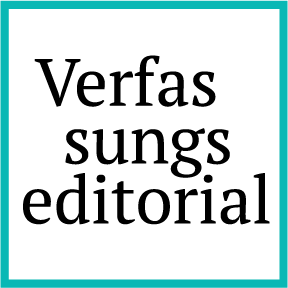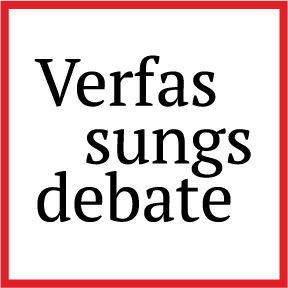Free Assembly for a Free People
In the age of the internet, people coming together in physical space still matters a great deal. This is especially true in countries where democracy is under threat. As has become increasingly clear during the past twenty years of the “global democratic recession,” existing institutions, not least courts, often fail to stop aspiring autocrats, while citizens on streets and squares might push back effectively – at least sometimes. Yet virtually everywhere the right to assemble has become more restricted. Even in non-autocratic contexts, states are ready to crack down on particular people (known climate protesters are put into preventive detention); on proclamations (certain expressions whose meaning is debatable are now considered indissolubly associated with Hamas, for instance, and hence are grounds for prohibition of assemblies in Germany), and on possessions (in the UK, all kinds of objects might now be considered fit for “locking on” and can therefore be grounds for arrest even when an individual has taken no action at all that would suggest a desire to “lock on”). It is urgent to reverse this trend.
Freedom of assembly has generally been the political liberty most subject to prior restraint: states find it easier to control space than to control speech. In many countries, a jurisprudence of free assembly remains distinctly underdeveloped; in the US, there has not been an assembly case in front of the Supreme Court for about four decades. There is no real separate assembly jurisprudence in American law; instead, one finds a tendency to run assembly and association together, and to subsume everything under a jurisprudence of “free expression” centered on speaking as the paradigm for expression. The result: where there is no speech involved, then, by definition, there cannot be a problem with restricting activities; hence, forms of political participation or self-expression which are “speechless” end up being less protected.
What else can assembly be if not speech? One answer is that it acquires meaning from taking place in particular spaces, or what Timothy Zick has called an “expressive topography:” assembly might require not just unrestricted articulations of political views, but finding, or making, particular spaces for assembly.
As is of course well-known, according to the “public forum doctrine,” one can distinguish among traditional or quintessential public forums, designated public forums where members of the public are in principle welcome and where at least sometimes assemblies have been held, and, lastly, straightforwardly non-public forums. Note how this approach relies at least implicitly on something like “spatial originalism:” if a particular kind of space has always been considered one of assembly, gatherings must generally be permissible; if it has only occasionally been designated for assembly, the protection of the right is uncertain or outright revocable; and if a place has “traditionally” not been considered one for assembly, it appears impossible to assert a right to gather in it. This spatial originalism might not seem to pose much of a problem for squares or greens; except that only some might have an unbroken tradition of spaces where the people come together; but non-traditional places – such as a plaza inside a commercial mall or an airport – would appear to be categorically ruled out as sites of assembly.
Today, we find ever more subtle ways of weakening the right to assembly, without ever officially disavowing it: high administrative burdens and fees can effectively amount to a tax on political participation; the politically active have to pay, everyone else gets to use public space for free. Such de facto taxes go against the spirit of assembly being, in the words of the Supreme Court, “essential to the poorly financed causes of little people.” Costs increase further if organizers face significant risks of civil liability: as Zick has pointed out, after the protests following the murder of George Floyd in 2020, some states introduced new, ill-defined grounds for liability such as “riotboosting” and “negligent protest organizing.” The latter would have held any organizer responsible for violence at a protest event, even if the organizer had explicitly discouraged violence.
A permit regime can serve to institutionalize or “bureaucratize” protest and create what critics like Zick rightly see as an increasingly rigid “public order management system.” Such a system diminishes the capacity of those participating to get in the face of other citizens, as they are safely contained in official “bubbles” or “free speech zones” — the flip side of which are speech-free zones.
One does not have to go from one extreme to another, from the view that activity in physical spaces has become much less meaningful to an uncritical belief in the bumper-sticker version of what has become a totemic number, or a kind of social science Hallmark card for protesters: according to Erica Chenoweth and Maria Stephan’s famous finding, non-violent resistance that mobilizes 3.5 per cent of a population has overwhelming chances of success (whereas violent action is actually more likely to fail or be counterproductive).
3.5 per cent would mean 11 million people on the streets – even the Women’s March, generally seen as highly successful, mobilized “only” 4 or so million people. As Chenoweth herself has cautioned, the 3.5 per cent number was not some hard social scientific law, let alone a prescription. Many movements have been successful with fewer participants. Plus, what might be described as a “historical tendency” was measured at a time when no-one was conscious of it. Things might be different, if one specifically tries to mobilize in light of a 3.5 per cent goal; conversely, power-holders might now be determined to prevent resisters reaching a particular threshold at all costs.
In fact, demonstrations rarely lead to immediate policy change. According to the writer and activist L. A. Kauffman, perhaps the only clear example of a direct result is a protest that in fact did not happen: in 1941, civil rights leader A. Philip Randolph threatened FDR with a protest against racial discrimination in the defense industry and the military; before a march on Washington took place, Roosevelt conceded and issued an executive order banning discrimination in the defense industry.
Yet immediate policy change is not the only metric of success. People coming out and seeing each other can be a morale booster. What is so often dismissed as performative – music, drums, people parading with hand-made signs to have their photos taken by others — is not a matter of narcissism; rather, it has been recognized by many modern thinkers, starting with Rousseau, as an important part of building community: politically inspired and inspiring festivals are not some frivolous sideshow; they allow assembled citizens to experience each other’s presence, their emotional dispositions (many are seething with anger!), and their commitment.
True, it matters what happens next. Many of the protests that took place during the past decade were ultimately unsuccessful because rapid mobilization via social media had not been preceded by patient organizing and the creation of effective structures for continuous engagement. By contrast, what remains the most famous protest in US history – the 1963 March on Washington – was a capstone march after years of difficult, often outright dangerous organizing. The March was flawlessly executed and produced iconic images; it is less well-known that the assembly was coordinated with the Kennedy administration and very tightly controlled by civil rights leaders (only approved signs were allowed; there was an official recommendation for what lunch to bring: peanut butter and jelly sandwiches).
At the end of the March, participants repeated a text read out by none other than A. Philip Randolph: they promised they would not “relax until victory is won.” It matters whether those assembling can stay engaged, building on easy connections during spontaneous encounters at a protest. Even by itself, though, what civil rights leaders called the “the meaning of our numbers” will not go unnoticed by politicians and, less obviously, courts hardly insensitive to public opinion.
These, then, are reasons why a basic communicative right often neglected by jurists is precious and must be protected especially against aspiring autocrats.
This post is cross-posted as part of our cooperation with the NYU Law Democracy Project. The “100 Ideas in 100 Days” essay series by the NYU Law Democracy Project brings together experts from across the ideological spectrum to explore the challenges facing democracies in the United States and around the world. Read more about the Democracy Project and the “100 Ideas in 100 Days” series here.



